The collection of traffic rules contains instructions for the driver and pedestrian duties. It's just that without knowledge of the basic principles of behavior on the road, it is impossible to become a driver, and a pedestrian is simple. If you think that to move along the roadway without the help of a vehicle, it is enough to know that you can cross the road only at the green light of the traffic light and you should move along the pedestrian crossing - you are mistaken.
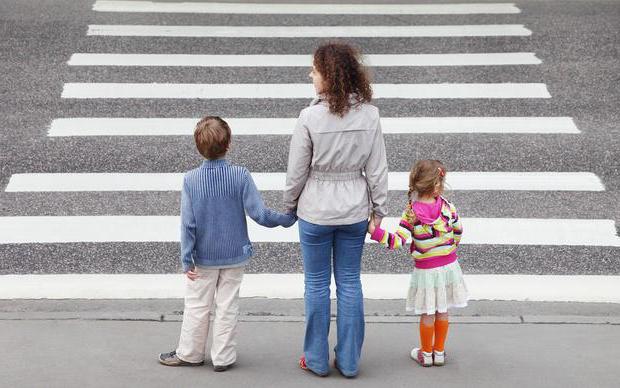
To be completely law-abiding pedestrian, a little more knowledge is required. This is not about intricate rules that need to be learned by heart. Traffic rules for pedestrians are quite simple and understandable - once you understand them, they will stay with you for the rest of your life. But, sometimes without even realizing it, by observing them we can save human life, our own and more than once.
Who is called a pedestrian
A pedestrian is any person who carries out movement along or across the carriageway without being in a vehicle. A person driving a bicycle or a moped is considered a driver, and the one who drives a vehicle next to him is a pedestrian. The principles of behavior on the road for those and others have differences.
A wheelchair not equipped with a motor is not considered a vehicle. A person moving on it is a full pedestrian. Although, for example, he is obliged to carry out movement along the edge of the carriageway according to the rules for drivers - in one direction with the general flow of cars.
Sidewalk Destination
Sidewalks are intended for walking along the roadway. Usually they are adjacent to a lane of vehicles or a bicycle path or can be separated from them by a metal fence or lawn. The safest way for a pedestrian is to move along a sidewalk that is separated from the roadway by a piece of land.
The sidewalk is intended for pedestrians, however, in some situations, vehicles can also move on it. Access to the pedestrian zone is permitted in exceptional circumstances for vehicles belonging to road and utility companies, as well as for the delivery of goods. Parking in the pedestrian zone is only possible in places where a special sign is installed.
The sidewalk is not intended for cycling, but in a certain situation this is not prohibited by law. Such a situation is the simultaneous lack of a bicycle path and the ability to move around the edge of the roadway. Traffic on the sidewalk should be carried out on the right.

Rules of movement in the absence of sidewalk
Sometimes the lack of a sidewalk on a section of a country road may mean a ban on walking along it. Such a ban defines an established road sign that looks like a blue rectangle with a white car on it. If this sign is not available, you can move along the bike path or along the side of the road.
In the absence of such a pedestrian has the right to move around the edge of the roadway. In this case, it is allowed to go strictly in one row and only towards the transport in motion. If a person rolls a bicycle or a moped or moves in a wheelchair, the direction of his movement must coincide with the direction of movement of the remaining vehicles.
Movement in the dark
At a late time of the day, you should try to be as careful as possible. Pedestrian responsibilities include taking care of personal safety.Good service in this situation will be served by clothes with reflective elements. Another option to ensure your own safety is to pick up an object with light-repellent areas. Such measures should be the rule for those who move outside the city. Within a settlement, they can be regarded as urgent advice, but not law.
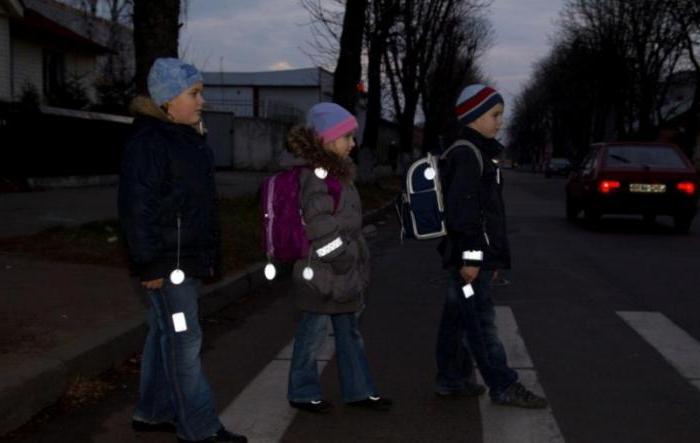
Roadway intersection
A pedestrian crossing, which can be located above the ground, underground or passing through the ground, provides the safest method of crossing the motorway. You can find these specially designated areas by the established road signs. The increased danger observed in the zone of movement of vehicles is reduced to zero when an underground passage or bridge is used to cross it.
The ground pedestrian crossing does not guarantee absolute safety. Violation of the rules associated with it, both on the part of drivers and pedestrians, often becomes the cause of an accident. The collection of traffic rules describes the conditions that must be observed when traveling on a pedestrian crossing.
Crossing the road on an unregulated zebra
On the "zebra" - a special marking on the roadway in the form of parallel white or yellow stripes - you can only move on foot. It is forbidden to cross a pedestrian crossing by bike or moped. If movement along it is regulated by a traffic light, you should focus only on it, if it is absent, pedestrians and drivers are subject to other rules.
At an unregulated pedestrian crossing, priority is given to pedestrians. This means that a person can cross the zebra at any time, and the driver must stop right there. In some places on both sides of the crosswalk there are speed bumps, which makes drivers slow down, and allows pedestrians to feel more secure.
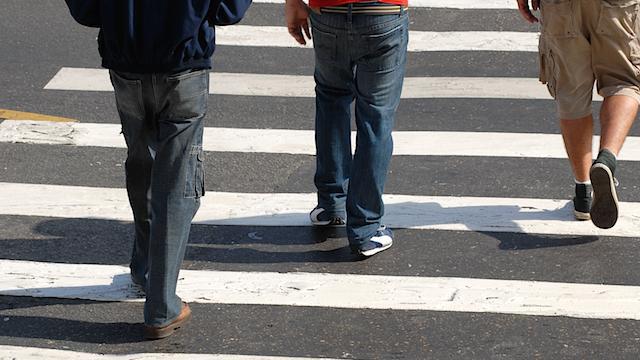
Errors at the unregulated pedestrian crossing
It is the pedestrian's responsibility to take care of one’s own safety, and therefore, before becoming a “zebra”, one should make sure that vehicles in motion have time to slow down. Emergency situation may occur if a pedestrian on the road appears suddenly for drivers. Most often this happens in cases of rush, talking on the phone or obscuring the view with parked cars.
A pedestrian is required to assess the situation on the road before stepping on a zebra. After he takes the first step, he should make sure that nearby drivers notice him and begin to slow down. After that, he needs to confidently go to the other side of the road, not twitching in doubt. Pedestrian traffic on a zebra should be smooth and fast.
Crosswalk
It is the duty of the pedestrian to cross the roadway at the intersection strictly at the green traffic light. All vehicles must pass a person crossing the road to the green light.
If the pedestrian does not have time to cross the entire section of the “zebra” before the traffic light changes its luminous color, he should wait for the desired signal, stopping at the marking line dividing the traffic lanes. Moving along a “zebra” or a marking line during a red and yellow traffic light is strictly prohibited.
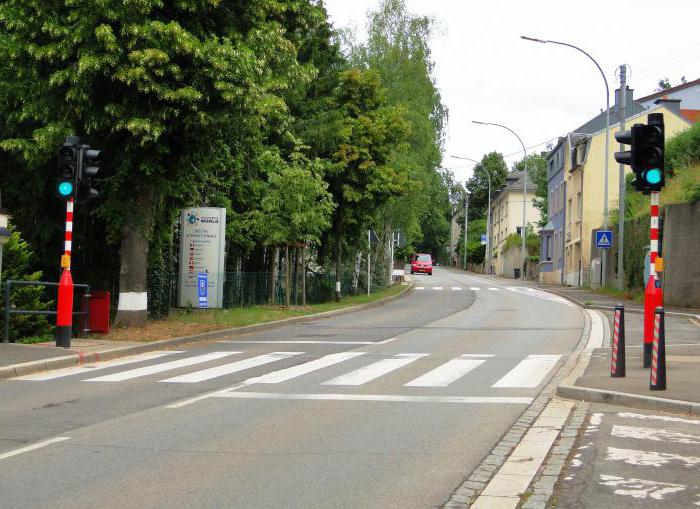
Crossing of the carriageway in the absence of a pedestrian crossing
If a person does not have a pedestrian crossing in the field of view, he can cross to the opposite side of the road at the nearest intersection. At the same time, the rules of the pedestrian oblige him to cross the carriageway strictly along the sidewalk or roadside line, making sure in advance that the approaching drivers will have time to reduce the speed of their vehicles.
If both the pedestrian crossing and the intersection are not visible, traffic rules for pedestrians allow them to move to the opposite side in any safe place on the road strictly perpendicular to the edge of the road. It is forbidden to cross the road outside the pedestrian crossing if it has four or more lanes.
Group Move
When moving along the carriageway of a group of people, a foot column should be organized. The beginning and end of such a column should be indicated by two people holding red flags in their hands. With poor visibility, the one in front is obliged to keep a lit white lamp, and the one at the end of the column is red.
A pedestrian is obliged to move along the carriageway in the direction opposite to the movement of vehicles, however, the column does not obey this rule and carries out movement in the opposite direction. A row of organized columns may consist of no more than four people, not including the escort.
Groups of children are allowed to move only along sidewalks or curbs, and cross the road exclusively at pedestrian crossings. Children can move in the traffic area only accompanied by adults and exclusively during the day.
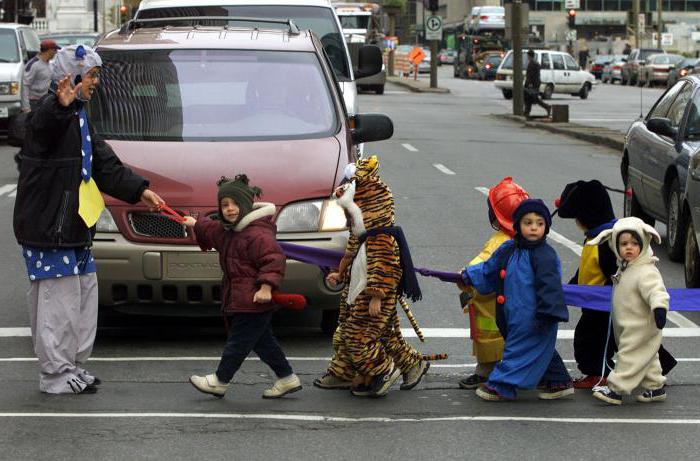
Boarding and exiting the vehicle
If the place of boarding public vehicles is not equipped with a special platform, access to the carriageway is allowed only after it has completely stopped. Running to a stopped vehicle from the opposite side of the road is strictly prohibited.
After exiting the bus or trolley, the pedestrian must bypass the vehicle from behind if it is necessary to cross the opposite side of the road. However, it is better to cross the road after the vehicle leaves, and even better to slowly cross the road at a pedestrian crossing or at an intersection. Moving across the roadway in places where standing vehicles interfere with good visibility is highly undesirable.
Punishment for violation of pedestrians
For violation of traffic rules for pedestrians, a fine is imposed. The more serious the violation and the ensuing consequences, the greater the size of the fine. In cases where as a result of unlawful actions of a pedestrian, someone was harmed, the court may punish the guilty person with imprisonment for up to two years, and if the victim died, the term may double.
In practice, it is quite rare to prove the pedestrian's guilt in an accident, since it is difficult to determine the speed with which he moved, and the trajectory of his movement. And the pedestrian's “limit of visibility” is a rather controversial concept. Moreover, most often it is he who receives the most serious damage as a result of his act.
However, the frequent impunity of pedestrians in violation of traffic rules should not encourage them to neglect the principles of behavior on the road. After all, it is precisely them who suffer most from the violation of these reasonable requirements. Inattention and irresponsible behavior on the roadway sometimes cost a pedestrian not only health but also life. But even if it does not end so sadly, the stress experienced at a dangerous moment will not be forgotten for a long time by both the driver and the pedestrian himself.

One conclusion suggests itself - the rights and obligations of pedestrians should be clearly aware of every sane person. For their ignorance or neglect of them you can pay too high a price. Crossing the road only in the right places, exclusively at the green light of the traffic light, showing special vigilance and accuracy on the roadway, the pedestrian thereby demonstrates respect for his own life and for the life of those around him.
